The AI mailroom robot
Writing text, generating images or solving mathematical puzzles, today’s AI models can do it all. When we read the headlines on sites like NU.nl and NOS or participate in any conversation in the office, it is (too) often about AI. Reason enough to assume that AI is also being used everywhere in the workplace. However, outside of asking a simple question to ChatGPT, this lags behind. What is the reason for this?
The promise of AI
The lack of AI in the workplace is in the applicability of the various AI models. When we see OpenAI’s smart GPT-4 model, we are all impressed, but using it efficiently during our daily work remains difficult.
This is when Robotic Process Automation (RPA) comes around the corner. RPA, also known as software robots, is a suitable platform for applying AI models to business processes. The software robots can extract relevant data from applications such as Outlook, Topdesk and ticketing systems. To then deliver it to the AI model to apply intelligence. The output of the model, for example a classification or prediction, the software robots use again to perform follow-up work.
What does this look like in practice?
At one of our clients in the housing sector, we successfully implemented an AI model using RPA/softwarerobots. Below is a description of this customer case.
The application of AI using RPA to the mailroom
The housing corporation receives 20,000 messages annually. These messages come from both tenants, suppliers, municipalities and other third parties. All of these messages were manually categorized by employees and archived in the Document Management System (DMS). Through the DMS, the messages reached the appropriate department, to be processed from there.
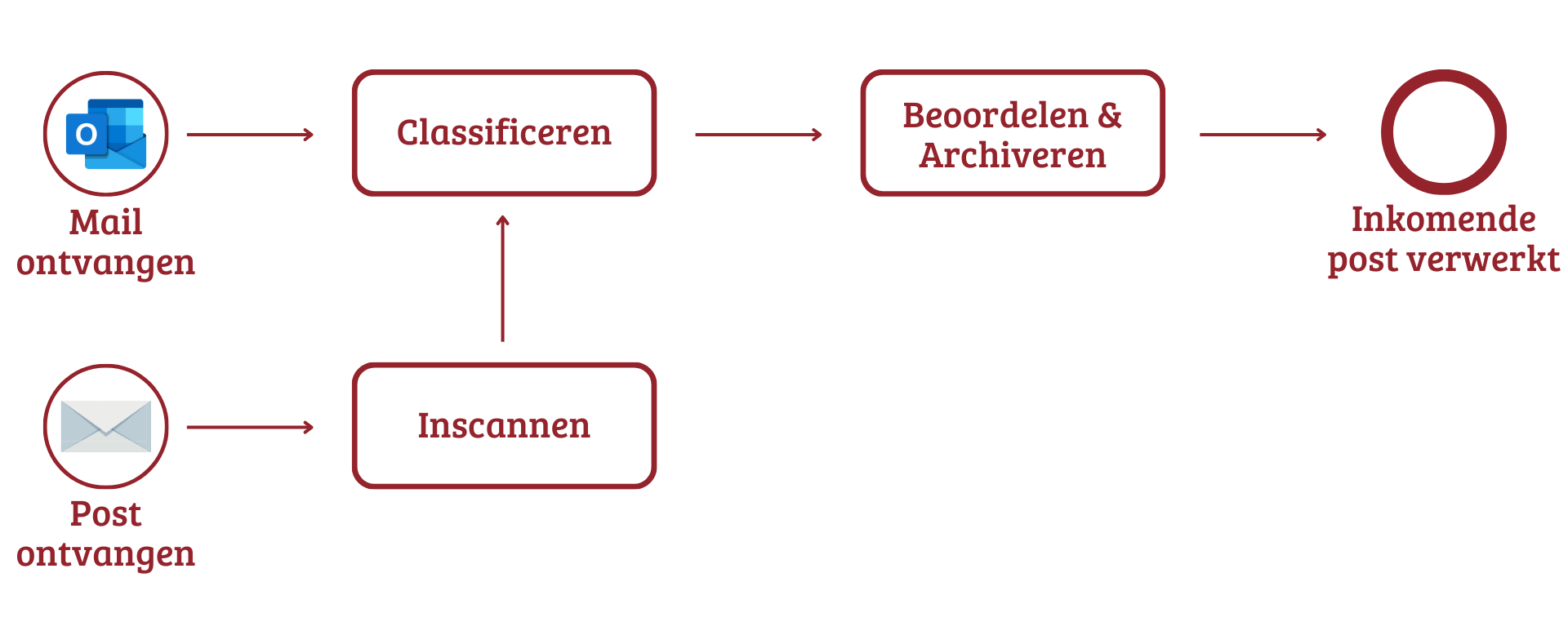
When one of the mailroom employees retired, a number of problems came to light, namely:
- Because of years of accumulated knowledge and experience on categorizing messages, the mailroom staff was difficult to replace
- Due to the complexity and versatility of the message flow, it was difficult to establish clear work instructions.
- During vacations or illness of the remaining employees, it was difficult to maintain continuity as it was difficult to arrange temporary replacements
For the above reasons, the housing corporation asked Tacstone Technology to come up with a solution.
Message flow inventory.
During an initial inventory of message flow, we distinguished between two different types of messages.
Level 1 messages are the messages with a fixed format and structure. These messages can be identified by fixed elements such as the subject, sender, a title or certain keywords. Based on these fixed elements, the message can be categorized.
Examples of such messages are:
- Forms submitted through the website (identified by title)
- Maintenance reports (identified by sender)
- Invoices (identified by certain keywords)
Level 2 messages are the messages without an established structure. For example, these are written by a tenant who does not adhere to a particular format and deal with issues such as:
- Repair Requests
- Nuisance reports
- Rent Payment
- Objections or compliments
In the absence of fixed elements and landmarks, we cannot define fixed rules and must use AI to categorize the message.
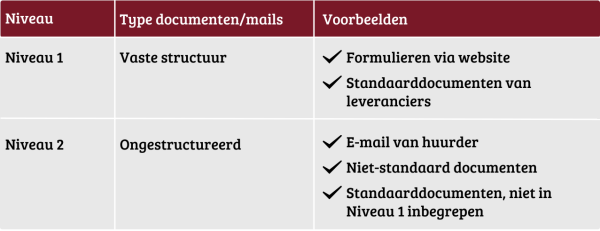
AI for classification
To classify the level 2 messages, we use the BERT model, which stands for BidirectionalEncoder Representations fromTransformers. This model from Google, like the GPT-4 model (used for ChatGPT, among others) from OpenAI, is already pre-trained.
This means that BERT has read a lot of text from the Internet as study material and because of this he is very good at understanding language/text. Thus, he understands very well the difference between the word “sofa” when it is described in its context as seating furniture and when it is used as a financial institution.
What we still need to do is specify and fine-tune the model to the housing corporation’s message flow.
Specifying BERT for the Mailroom
In order for the BERT model to correctly categorize the messages, we need to collect enough sample messages for each category.
To collect enough examples, we built a software robot that can download, by category, already archived messages from the DMS.
After cleaning the messages, we divided them into a training set (80%) and a test set (20%). In the “training run,” the training set is used to find patterns and similarities among the messages. Then the test-set is used to test the outcomes of the training run. The messages from the test-set are run through the AI model and the prediction is compared with the actual category, this is called supervised learning. If the outcomes of this test are not optimal, the training run starts again from scratch.
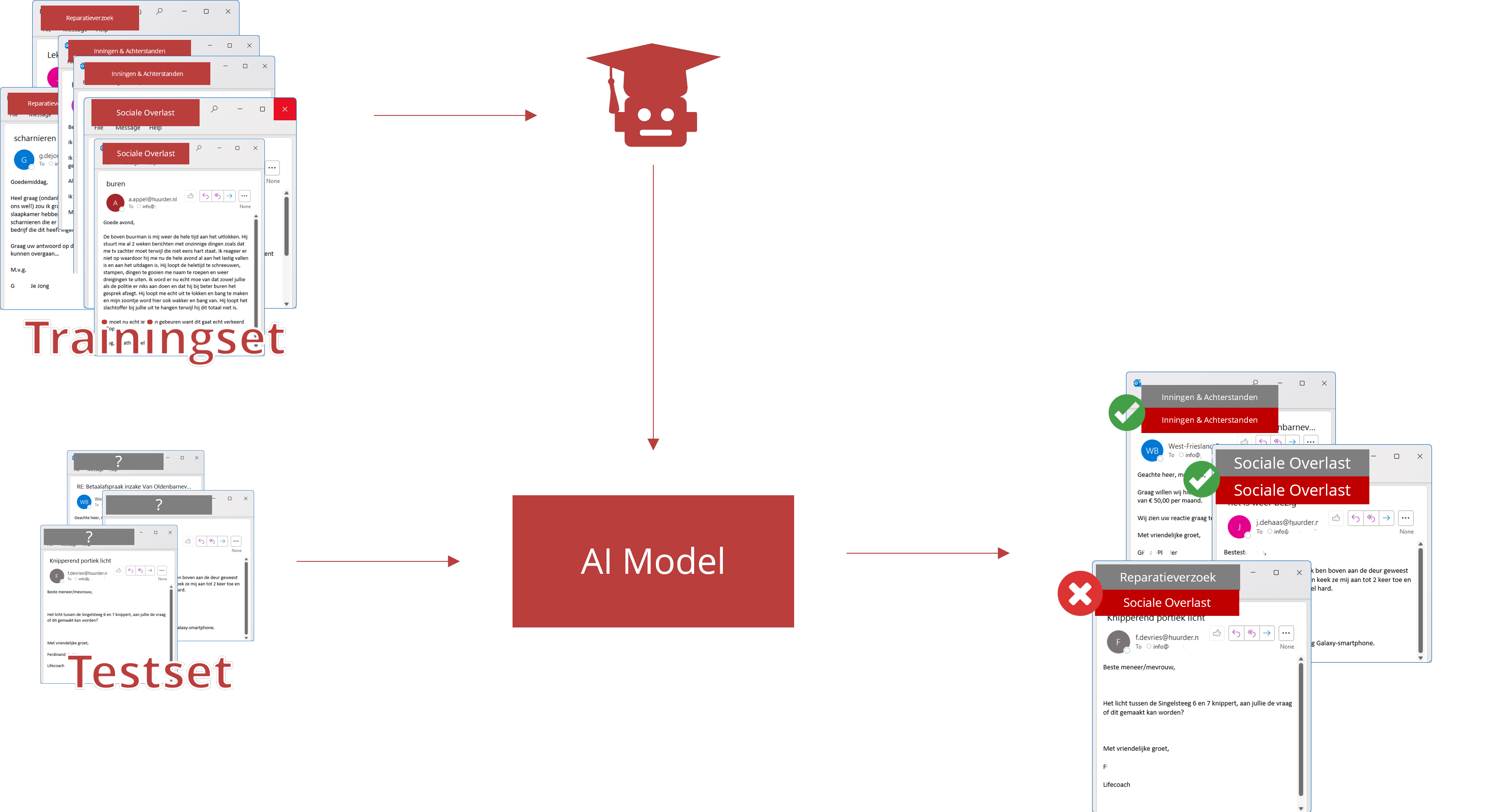
Software robots (RPA) as ‘the middleman’
To deploy the trained AI model, we built a number of software robots:
- Prepare
Retrieves messages from Outlook and prepares them for the Classification Level 1 module. - Process classification 1.
Categorizes the level 1 messages (with a fixed structure and fixed elements). The remaining messages are sent to the Classification level 2 module - Processing classification 2
Categorizes the level 2 messages (unstructured, free text) by calling the AI model - Handling robot
This robot performs the appropriate follow-up action based on the category given by robot 2 or 3
The software robots move the messages between the different (classification) modules and archive the message based on the predicted category.

Handle cases of doubt correctly
When the AI model makes a prediction, it also returns a certain confidence score (“confidence”)-that is, it returns a certain confidence score. Using this score, we can determine for each category whether we accept the prediction or whether it requires a manual check. To enable this check, we developed an app in UiPath Apps.
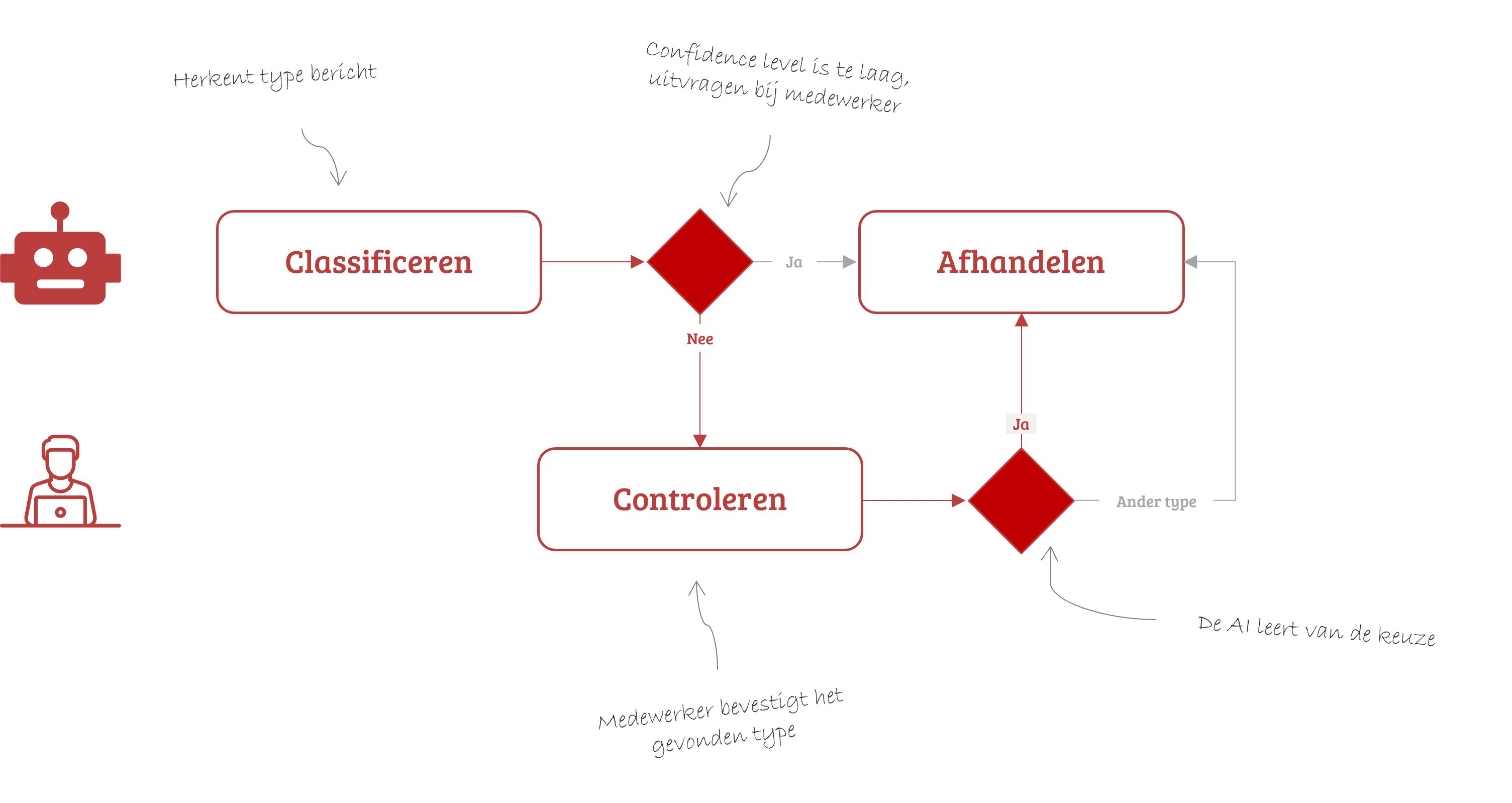
UiPath Apps is a low-code application development platform. Low-code means that you can build an app by dragging pre-programmed blocks into the app. This way of building apps is a lot faster than traditional programming.
In the mailroom app, employees can approve or correct the doubtful messages after which they return to the software robots. The software robots not only pick up the processing again, but also train the model with these improved messages. That way, over time, the model becomes more and more intelligent.
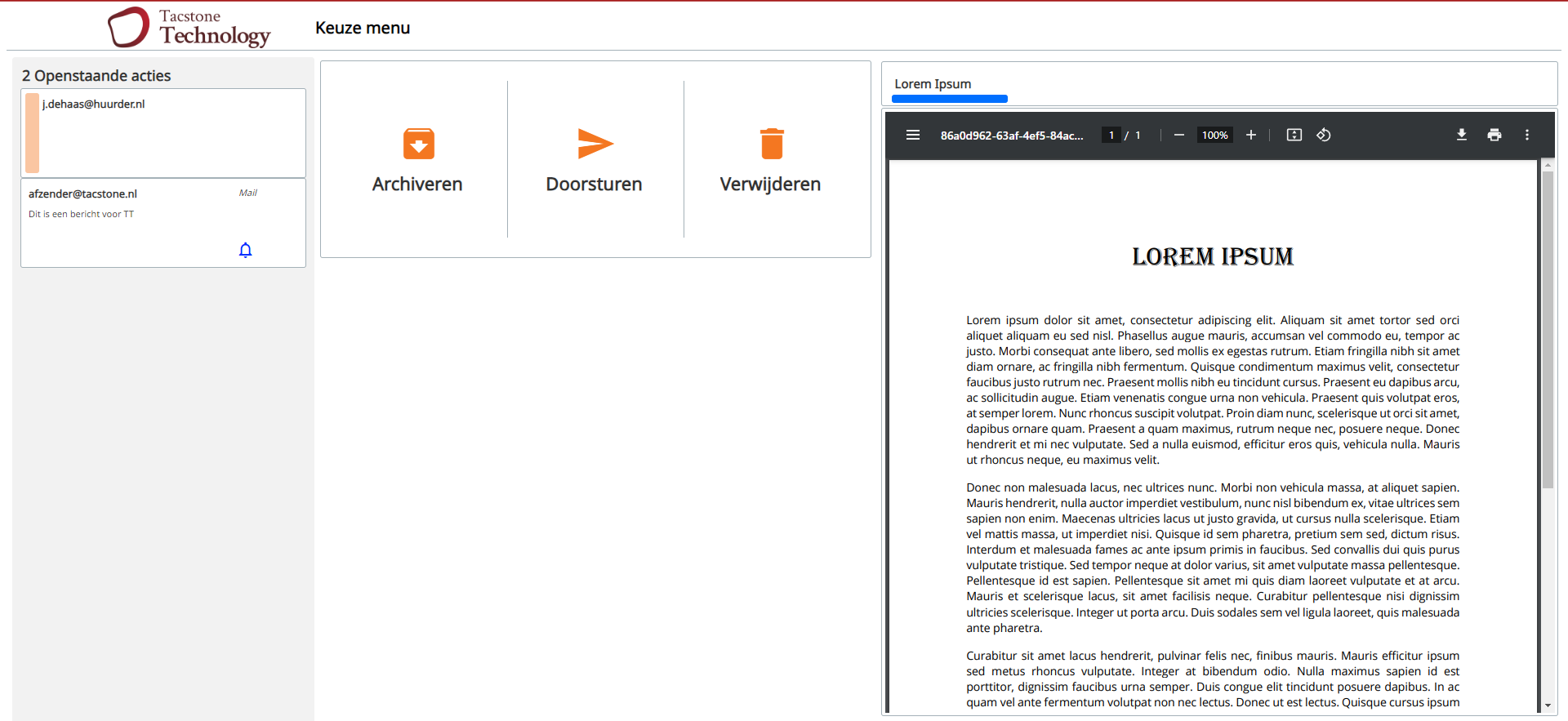
Getting started with AI yourself? Take these lessons learned with you
- Good preparation is essential
Each model requires a different approach when it comes to data cleansing. Or the amount of training data it needs. So choosing the right model depends on the available data. - Choose a modular implementation
Dividing the work process into multiple software robots has proven to be effective. Working with different robots makes it easier to optimize certain aspects of the robot without disrupting the entire system. - Include employees
AI gives many people a kind of scare effect, especially when it gets close, such as on the shop floor during your work. Therefore, it is important to include employees well and make sure that you remain continuously transparent about what the AI model can and cannot do. - Just do it!
There are many different types of AI models with different functionalities. Many AI models are open source (i.e., free) and come with good documentation. Start experimenting and learn “on the job.
Start an RPA & AI pilot
Looking for a working AI solution in your own organization? To gain knowledge and experience with the possibilities of AI?
Contact us about the possibilities.
Lees meer
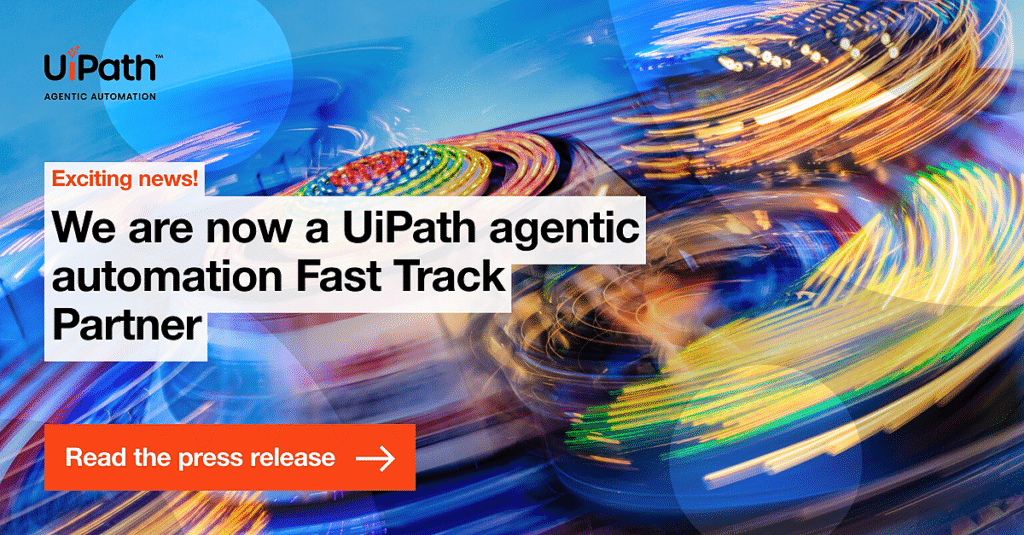

Geerten Oelering joins Tacstone Technology


Tacstone Talks
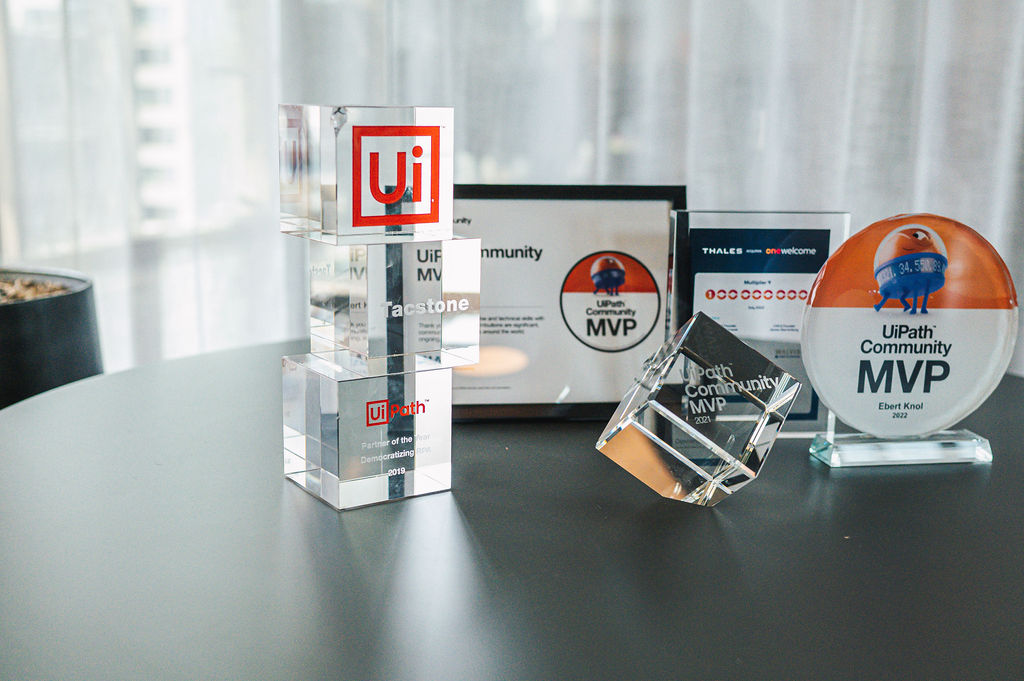

Tacstone Technology achieves Diamond partner status with UiPath


Tacstone Technology and PTWEE join forces for test automation


Deep-dive UiPath Test Automation


Tacstone achieves USN status


Tacstone Technology acquires Microsoft partner Tingk


Automating business processes in SAP with RPA, Low Code Apps & AI
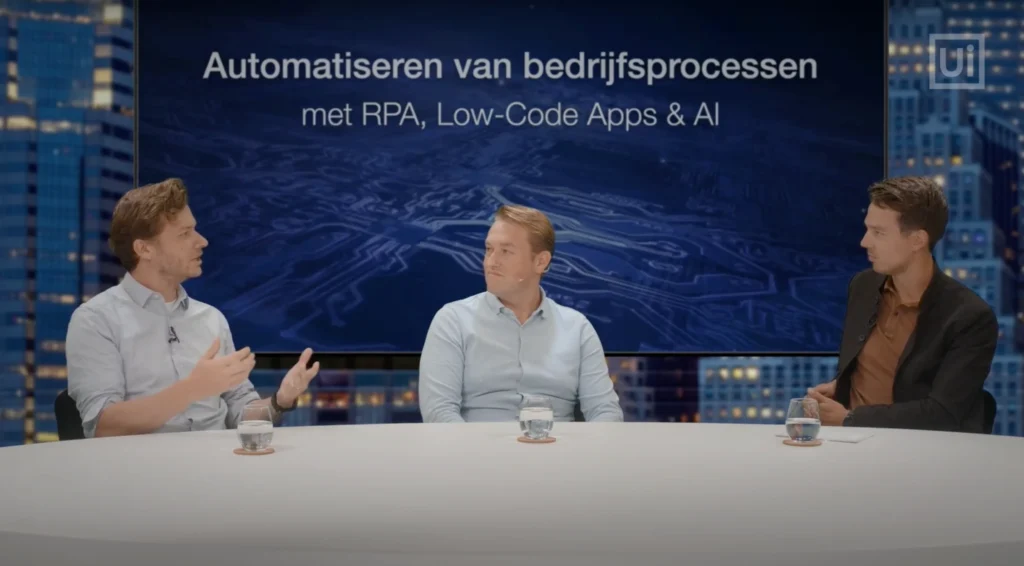

Solving the IT Gap with RPA, Low Code Apps & AI



